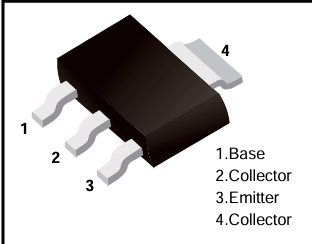Date:2025-05-15 Categories:Product knowledge Hits:413 From:Guangdong Youfeng Microelectronics Co., Ltd
1. Introduction to Transistors
Transistors are semiconductor devices that play a crucial role in modern electronics, especially in amplifying and switching electronic signals. Among them, small-signal transistors are specifically designed to handle low-power electrical signals with high fidelity, making them essential components in various applications such as audio amplifiers, radio frequency (RF) circuits, and signal processing systems. Understanding the working principle of small-signal transistors is fundamental for designing and analyzing electronic circuits.
2. Structure of a Bipolar Junction Transistor (BJT)
The most common type of small-signal transistors is the Bipolar Junction Transistor, which has three terminals: the base (B), the collector (C), and the emitter (E). Structurally, a BJT consists of two p-n junctions formed by sandwiching a thin layer of one type of semiconductor (either p-type or n-type) between two layers of the opposite type. There are two main types of BJTs: NPN and PNP.
In an NPN transistor, two n-type semiconductor regions sandwich a p-type region. The n-type regions form the emitter and collector, while the p-type region acts as the base. Conversely, in a PNP transistor, two p-type regions surround an n-type base region. This unique structure is the foundation for the transistor's ability to control the flow of current, which is key to its operation in small-signal applications. small-signal transistors ,
3. Operating Modes of a BJT
BJTs can operate in three main modes: the cutoff mode, the active mode, and the saturation mode. For small-signal amplification, the transistor typically operates in the active mode. small-signal transistors
3.1 Cutoff Mode
In the cutoff mode, both the base-emitter (BE) and base-collector (BC) junctions are reverse-biased. With very little or no current flowing through the base terminal, there is almost no current between the collector and the emitter. This mode is often used in switching applications when the transistor needs to be “off,” blocking the current flow between the collector and emitter.
3.2 Active Mode
The active mode is the most important mode for small-signal transistors. In this mode, the BE junction is forward-biased, while the BC junction is reverse-biased. When a small current is applied to the base terminal, it creates a much larger current flow between the collector and the emitter. This current amplification property is what makes the transistor useful for signal amplification.

Previous: Classification, Structure, and Principle of MOSFET
Next: Amplification Mechanism